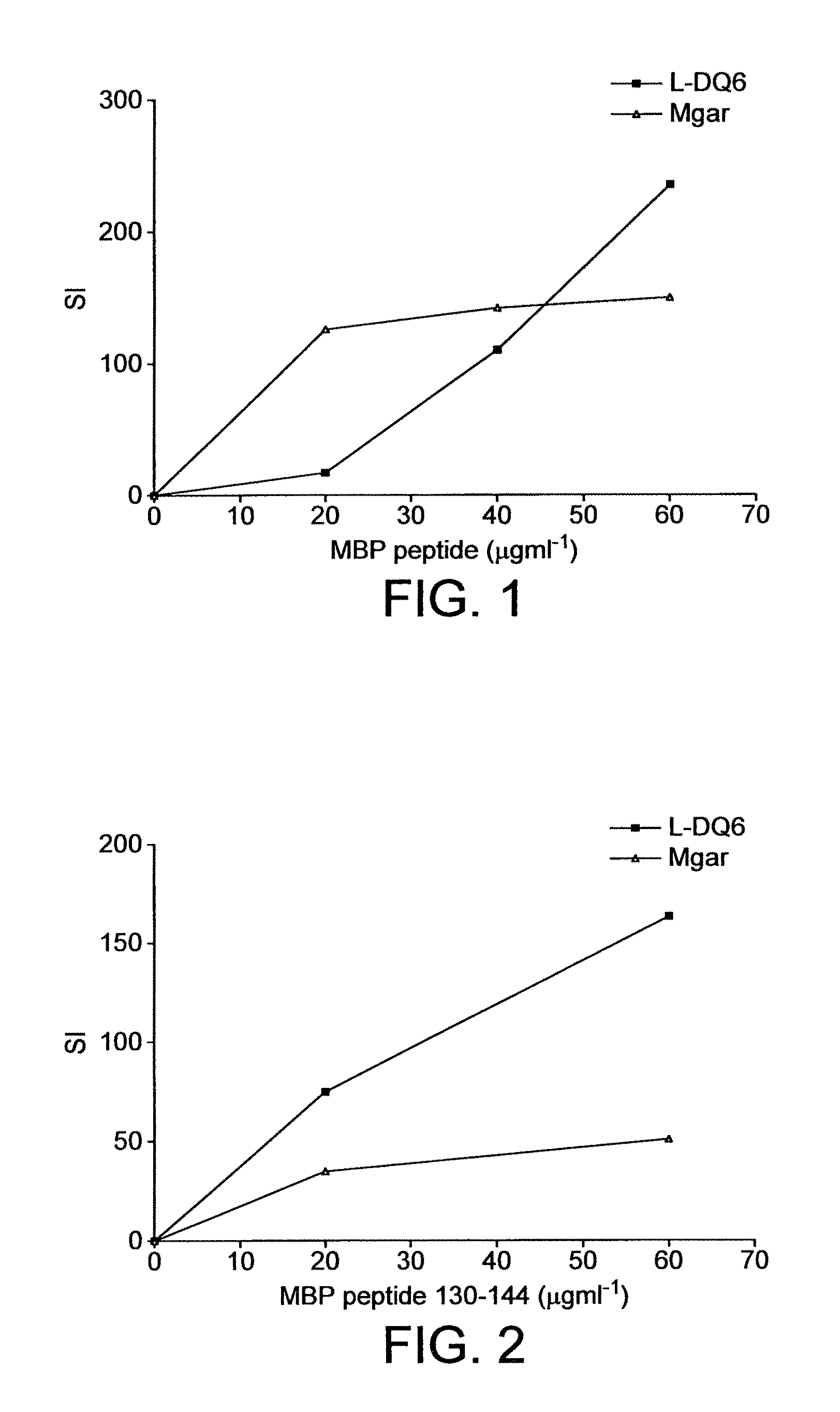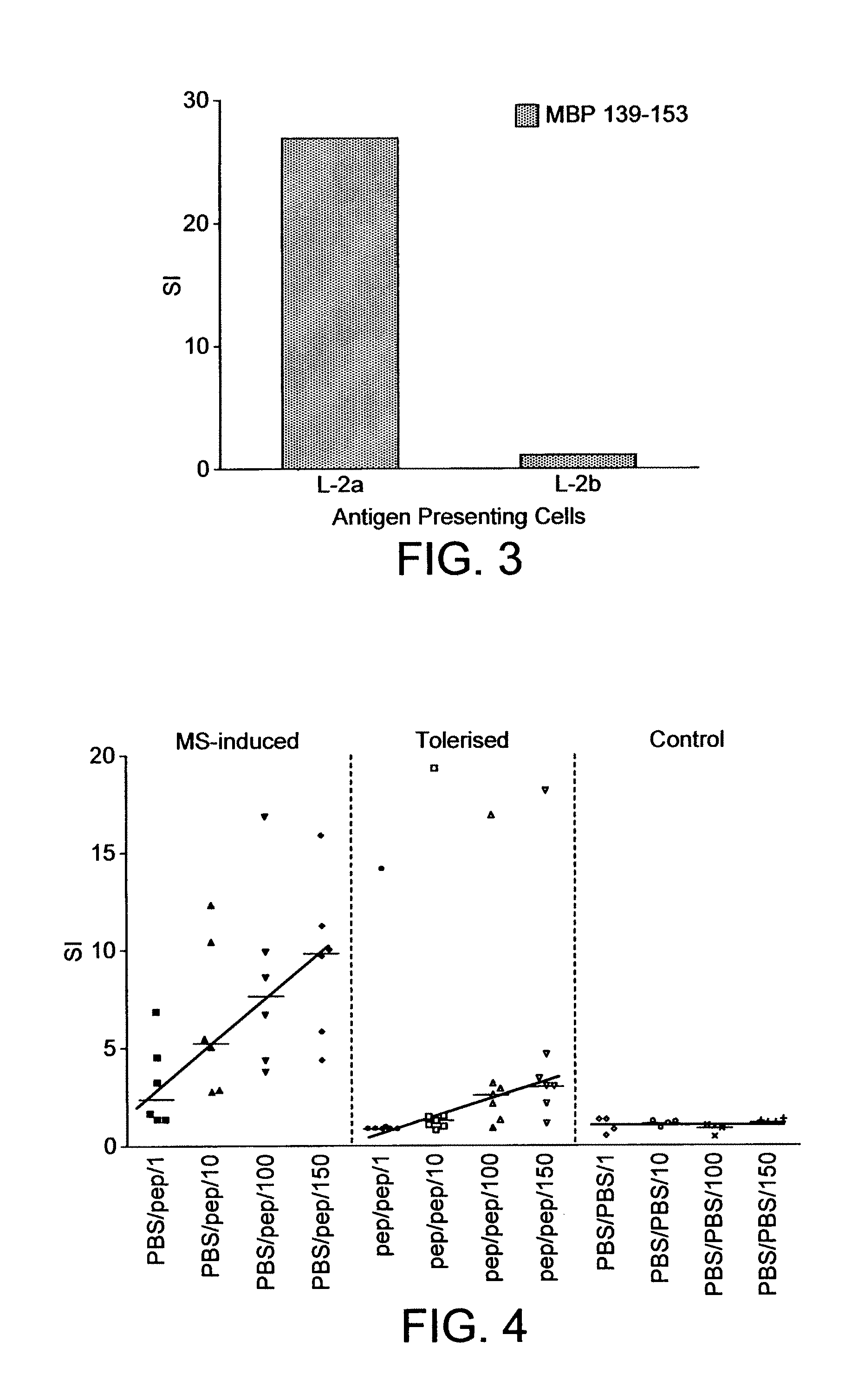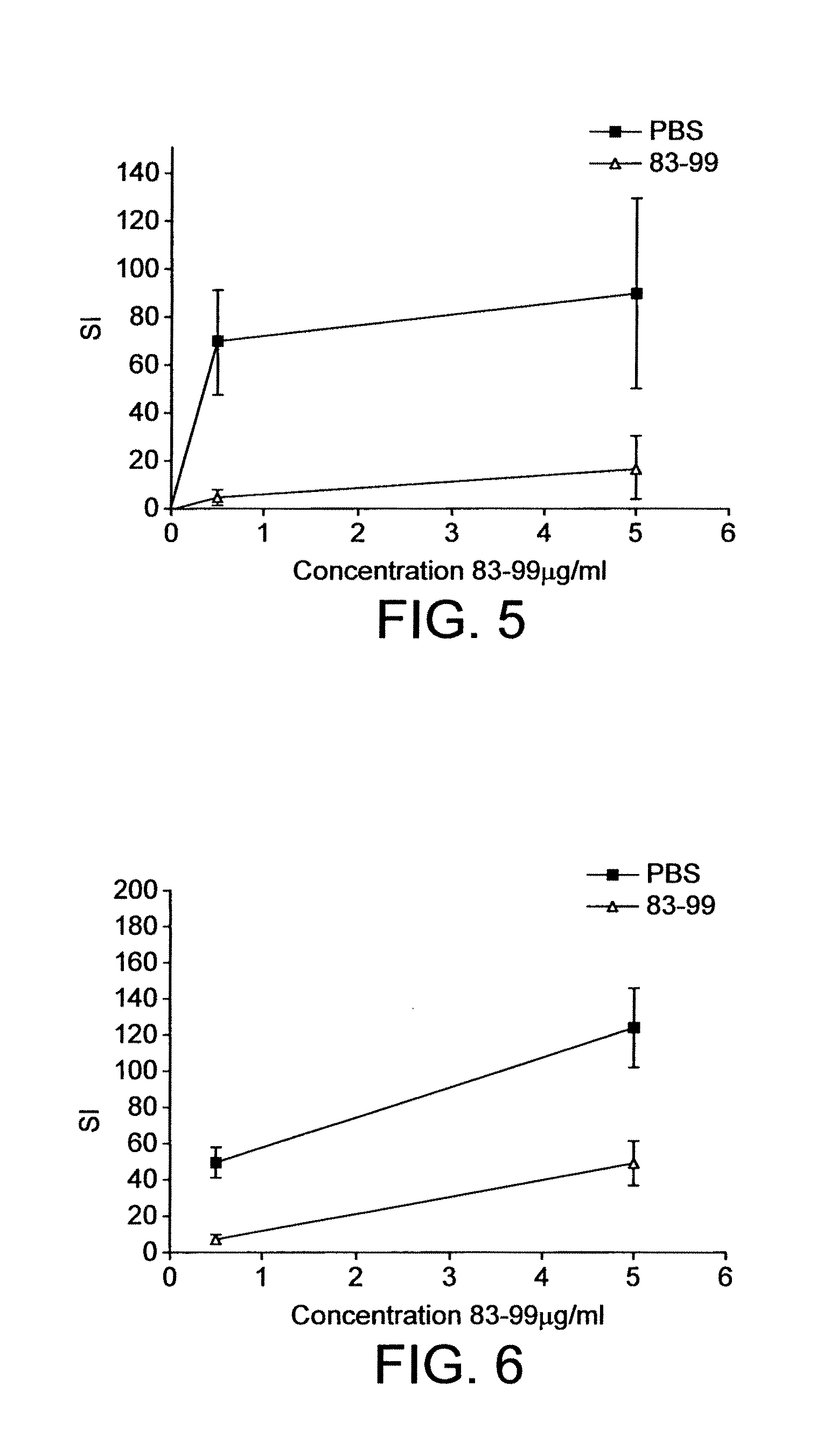Myelin basic protein peptide composition
a basic protein and peptide technology, applied in the field of myelin basic protein peptide composition, can solve the problems of muscle spasms and severe paralysis, high cost and relatively high risk, and the controversial administration of cytostatics
- Summary
- Abstract
- Description
- Claims
- Application Information
AI Technical Summary
Benefits of technology
Problems solved by technology
Method used
Image
Examples
example 1
Identification of HLA-DQ6 Restricted Myelin Basic Protein T-cell Epitopes
[0091]MHC Class II genes confer susceptibility to multiple sclerosis (Nepom and Ehrlich (1991) Ann. Rev. Immunol. 9: 493-525). Within Caucasians in Northern and Central Europe, Australia and Northern America the association is linked to the MHC molecule HLA-DR2 (DR2a [DRB5*0101] and DR2b [DRB1*1501], Haines et al (1998) Human Mol. Genet. 7: 1229-1234). Although the DR2 and DQ6 alleles of MHC are found at different loci, there is significant linkage disequilibrium between the two alleles. The concordance between the two alleles is 99%, much greater than expected if the alleles were randomly re-associated. Therefore the possibility arises that certain T-cell epitopes associated with MS may be HLA-DQ6 restricted rather than HLA-DR2 restricted.
[0092]The aim of this study was to identify whether human MBP T-cell epitopes are presented by the HLA-DQ6 molecule to T-cell clones isolated from HLA-DR2 positive MS patient...
example 2
Induction of Tolerance with Apitope MS6 in a HLA:DR2 Transgenic Mouse
[0101]This study was designed to demonstrate that an apitope (Apitope MS6), when presented by an MHC Class II molecule, can induce immunological tolerance in a humanized mouse model of multiple sclerosis. Apitope MS6 is an apitope selected from within T-cell epitopes of MBP corresponding to MBP 140-154, and is presented by MHC Class II on antigen presenting cells, and can stimulate T-cells without being processed (see WO 03 / 064464). The mouse model used was transgenic for the human MHC molecule HLA:DR2 (DRB1*1501) (Madsen et al (1999) Nature Genetics 23:343-347).
[0102]The induction of anergy or changes in the CD4+ T-cell population in a mouse after administration of an apitope may be monitored by a reduction in T-cell proliferation when challenged with the antigen in vivo.
Peptide Synthesis
[0103]Apitope MS6 (MBP peptide 140-154) was synthesised using L-amino acids and standard F-moc chemistry on an Abimed AMS 422 mu...
example 3
Induction of Tolerance with Apitope MS7 (MBP 83-99) in HLA:DR2 and T-cell Receptor (MBP) 82-100 Double-transgenic Mice
[0111]This study investigates the ability of Apitope MS7 (MBP peptide 83-99) to induce tolerance in double transgenic mice expressing HLA:DR2 together with the T-cell receptor for the HLA: DR2 bound myelin basic protein (MBP) 82-100 peptide.
[0112]Splenocytes from these double transgenic animals proliferate in vitro in response to Apitope MS7. Reduction or abrogation of the in vitro splenocyte response to an apitope following its repeated administration in vivo indicates that a state of tolerance has been achieved.
[0113]Tolerance induction has been attempted using both the intranasal and subcutaneous / intradermal routes of apitope administration.
[0114]Groups of 6 or 7 age (8-12 weeks) and sex matched double transgenic mice were used. In the first experiment one group was treated ten times intranasally with 100 μg Apitope MS7 in 250 PBS at regular int...
PUM
| Property | Measurement | Unit |
|---|---|---|
| volume | aaaaa | aaaaa |
| concentration | aaaaa | aaaaa |
| distance | aaaaa | aaaaa |
Abstract
Description
Claims
Application Information
 Login to View More
Login to View More - R&D
- Intellectual Property
- Life Sciences
- Materials
- Tech Scout
- Unparalleled Data Quality
- Higher Quality Content
- 60% Fewer Hallucinations
Browse by: Latest US Patents, China's latest patents, Technical Efficacy Thesaurus, Application Domain, Technology Topic, Popular Technical Reports.
© 2025 PatSnap. All rights reserved.Legal|Privacy policy|Modern Slavery Act Transparency Statement|Sitemap|About US| Contact US: help@patsnap.com



